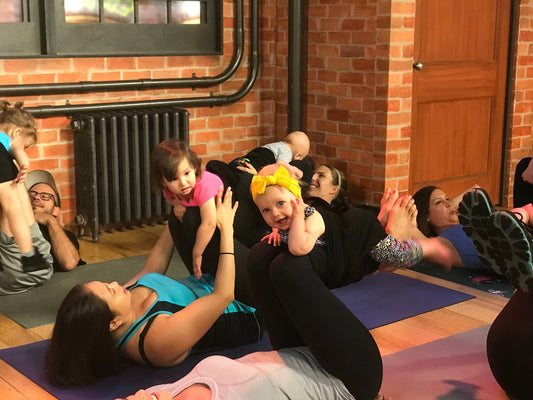Our Blog Posts
Frequently Asked Questions
What is Tummy Time?
Placing your baby onto their tummy vs their back while they are awake. Tummy time should always be supervised.
Most babies should begin tummy time as a newborn but check with your pediatrician if your baby has any restrictions.
Tummy time helps babies develop the lower lumbar curve in their spine while also strengthening their trunk and neck muscles, which will eventually aid in learning to crawl and then walk. Tummy time allows gentle pressure on your baby's organs, helping to relieve gas. It is also a wonderful way to develop fine and gross motor skills, along with sensory play, helping with your baby's development.
How can Roos Wraps help babies with colic?
Tummy time on a flat surface is extremely difficult for babies who are suffering from colic. When baby is placed at an angle, tummy time gets physically easier for them—kinda like an adult suffering from acid reflux sleeping at an angle. Also the gentle pressure on the baby's digestive system by your shins along, with the gentle bouncing and patting, baby's back can help relieve gas.
How does Roos Wraps stimulate Proprioception input and Vestibular input?
Being snuggly wrapped in Roos Wraps creates a gentle pressure to calm the baby while creating body awareness and body position in space, otherwise known as proprioception input.
Gentle bouncing of the legs activates the receptors in the inner ear, creating a sense of balance, otherwise known as
vestibular input.
How does Roos Wraps help create stability and better posture?
Roos Wraps is a flexible material where an adult can hold onto the straps and guide the baby to sitting, and continue to build their trunk muscles
Roos Wraps also allow the baby to sit up tall just about everywhere instead of leaning to the side, creating uneven obliques and lateral bend to the spine.
What is Kangaroo Mother Care?
Kangaroo care involves holding your baby against your chest for skin-to-skin contact. This type of touch can result in a variety of benefits for your baby’s mental and physical development, including:
- Regulating baby’s temperature, breathing, and heart rate
- Strengthening the emotional bond between baby and Mom or Dad
- Increasing Mom’s milk supply
- Encouraging baby’s growth
- Supporting healthy sleep, including quieter and longer naps
Many doctors and neonatal care workers recommend starting kangaroo care as soon as possible. How often or how long to hold your baby against your chest depends on your lifestyle and your baby’s needs.
You can learn more about the history of kangaroo care and how it works here: https://my.clevelandclinic.org/health/treatments/12578-kangaroo-care



